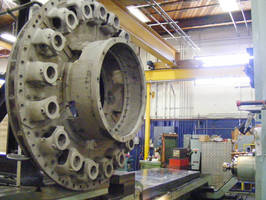Machinists Inc. Makes Critical Repairs on 1920s Era Hydro Dam

In Alaska, there is a hydro plant that supplies power to the city of Ketchikan. Built in the 1920s, the components in the power generating system were in need of repair.
Machinists Inc. was contacted about helping to fix these components. As you can imagine, repairing such an old unit was a particular challenge. Sure there were some schematics, but that did not help much.
"We have some 1920s drawings that were pretty much useless. There is no real way to extract much information from those. In addition, in many cases, there are a lot of modifications that have been done over the years, that were not well documented," said MI Director of Marketing, Jeff Tomson. "Therefore, you are tying to catch up to what the modifications were for, and what is trying to be achieved now, that may or may not have been applicable at the inception of the part or tool."
Getting back to the original manufactured condition was an experience in itself, Tomson said, due to the wear and the difficulty of trying to understand the real function of certain parts.
What was this part supposed to do? What is the part doing now? At MI, there is a lot of mechanical knowledge and real world experience, so they were able to apply a lot of mechanical principles to the problems they encountered.
"So many of the mechanical principles cross over into the different industries, you can figure how things function," Tomson said. "We work through what acceptable manufacturing practices are for similar functions."
In some cases, modifications are made to make the equipment perform better.
"For example, the dynamic balancing and that kind of accuracy wasn't available back in the times when these units were built," Tomson said. "We can actually machine more accurately, where the older equipment wasn't able to achieve the tight tolerances and tighter fits."
When MI gets a component with multiple interfaces, Tomson said they can be much more accurate on their machines, than the original builders ever could have been, especially in the field when the equipment was being installed. When the order first comes to MI, it is typically fairly generic, giving the MI team lots of flexibility to make the necessary repairs to make the product even better.Â
The repairs on the dam equipment took about three months, during a time in the winter when the dam is shutdown. Typically, repairs are made at this time. But when spring hits, they have to be up and running.
So far, everything is working fabulously.
"It puts out more power than it did before and performed tremendously. It used to leak water like a sieve. We eliminated that as one of the problems. Now, they can use the wicket gates like they are supposed to, controlling water flow for a shut off," Tomson said. "It had a lot of blow-by before, where the water was blowing by the wicket gates. Therefore, you had problems associated with that."
For more information contact Jeff Tomson, Machinists Inc., 206-763-0990 - www.machinistsinc.com




